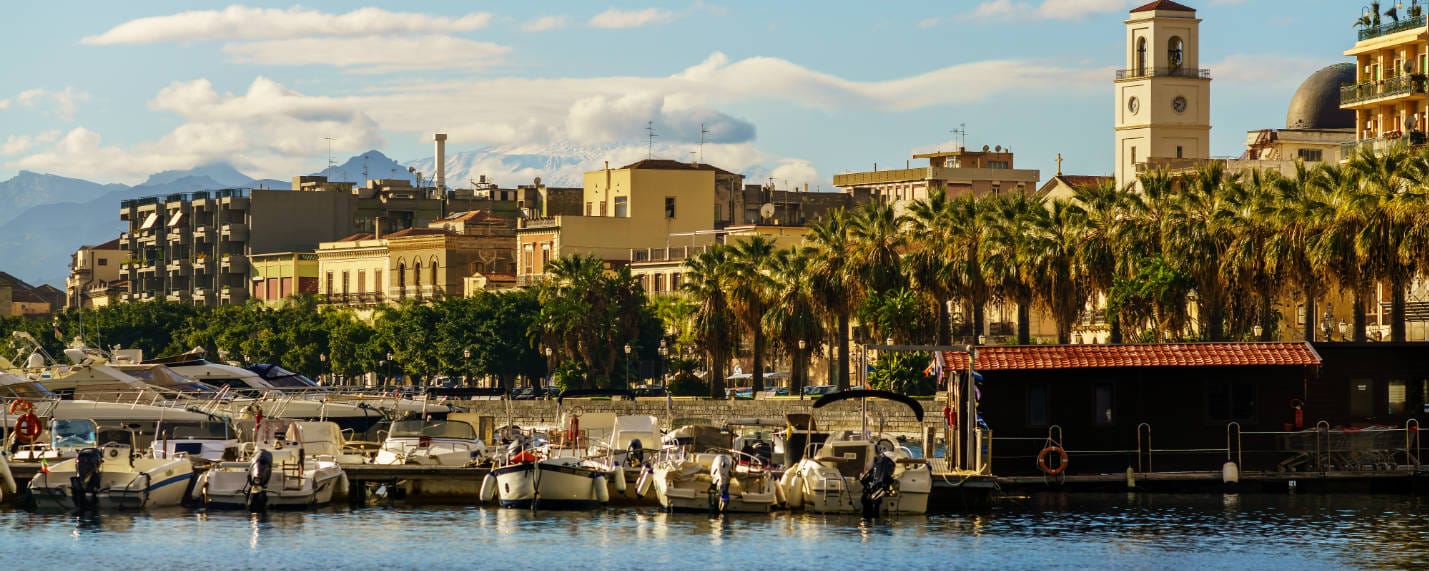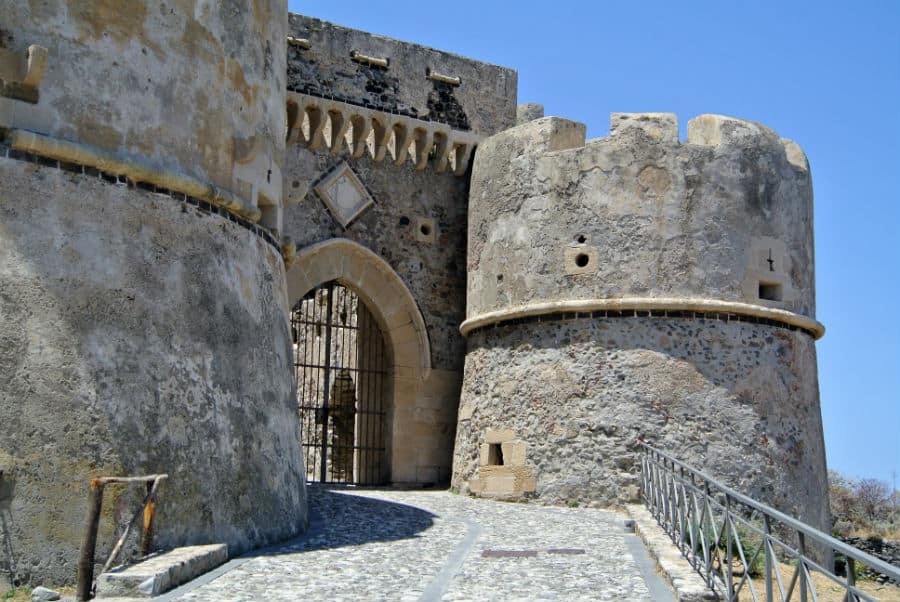Milazzo Castle, also known as fortified citadel of Milazzo, is located in the ancient village of Milazzo. The fortress and the whole area included in the large enclosure of the Spanish Walls (walled city and the ancient village), represents the largest fortified citadel exists in Sicily. It rises on the top of southern peninsula of Capo Milazzo. The summit is located in the oldest part and gradually downwards and degrading toward the outside to Levante, the various overlaps identifiable in the styles of the typical architecture of the various dominations. The Necropolis and the areas that constitute the agglomeration or the castrum are located in the area of the plains of the Citadel.
In the northern part of the area of the castle there is a necropolis of Neolithic, age of Thapsos. The trade of pumice and derivatives of obsidian of volcanic origin used as splinters, arrowheads and spears, blades, jointly with the charming position, the fertility of the territories encourages the settlement of the first communities in prehistoric times thanks to trade with the Aeolian Islands in the north, with the densely populated area of the Strait of Messina to the east and with the localities of the Gulf of Patti in the west. In the classic age the city is formed by the port area, from the acropolis of the ancient subcolonia Mylai at the fortress used to emporion, phrourion and numerous villages satellites. The first historical document date back however to the imperial age that narrate the city defined Oppidum Mylae which active port on the Tyrrhenian Sea, whose waters are the theater of the epic battle of Milazzo of 260 a. C. and the battle of Nauloco 36 a. C. Conduct for Internal disagreement between Augustus with faithful Marco Vipsanio Agrippa against Sextus Pompeius Magnus Pius. In the Byzantine period is reconfirmed the centrality of the castrum at the fortress as fulcrum administrative political. The VII century is the primitive Cathedral at the foot of the Fortress, in the area corresponding to the modern district of San Papino. With the advent of the arabs every type of existing product is destroyed and consequently remodulated in accordance with the canons of Arab architecture. In 843, the troops of the condottiere Fadhl Ibn Giàfar shave to soil the Byzantine Castrum and the constructions atop raising the first nucleus of the castle. The donjon or male or Norman Donjon made on an Arab construction, which do not have documentation try, is then expanded by the Norman-Swabians. The tower a quadrangular commonly called donjon is of Arabic period or anyhow performed, developed and enlarged by workers in the Middle East in periods immediately following. It is characterized by the presence of towers on the front of Ponente, the central one from the aspect massif and the imposing is called Saracen Tower, the one at the southern end Tower of lightning rod. A feature common to all parts of the construction of the matrix byzantine – Arabic, peculiarity akin to cube metochi and of the surroundings: the use of hewn lava stone. The main body of the upper construction, which is accessed by means of a scale in terraces enclosed between the primitive Saracen Tower and dungeons, is constituted by a series of large compartments delimited to the south by the Tower of the lightning conductor, the master environment is called the “Room of the Parliament”. At the end of 1295 within the great hall meets a roving session of the Sicilian Parliament after the motions of the Sicilian Vespers presided by Frederick II of Aragon better known as Frederick III of Sicily or of Trinacria. The inhabited nucleus located in the flat part of the bobbin is defended by the imposing walls spanish starting from 1523. The towers with truncated cone base shoe are added during the Spanish domination of the Emperor Charles V. In 1713, the castle is the basis for the armies Austro – Piedmont against attacks on Spanish captained by the Viceroy Jean François de Bette III Marquis of Lede. From 1805 to 1815, becomes stronghold English in the course of the Napoleonic wars, and hosts the fleet and troops in defense of Ferdinand of Bourbon. With the advent of the Kingdom of Italy, the city lost its importance strategic military – and the Castle in 1880 is downgraded from real stronghold a prison. The secret and dependencies located in the immediate vicinity of Piazza d’Armi inside of the primitive fortification, are adapted to basic cells for the imprisonment of prisoners. From 2016 the fortified citadel houses annually in the summer period the mish mash Festival, one of the most significant reviews of indie music, rock and electronic of Sicily.
beniculturali@comune.milazzo.me.it



